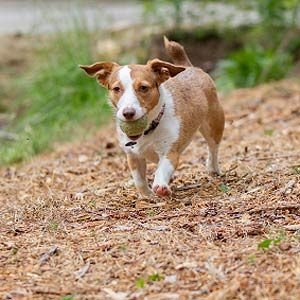
How to Read a Dog’s Tail Movements
Dogs communicate with their entire bodies. When you get home from work, your dog probably wiggles and waggles from top to bottom, eyes alight, ears perked up and voice greeting you with short, high-pitched yaps. But even if you were to ignore these clues, you could ascertain all the information you need to know to make an accurate judgment about your dog’s mood from his tail alone. Here’s how to read a dog’s tail movements and what they mean:
(Photo courtesy of iStock)

1. How to Read a Dog’s Tail: The Excited Wag
How to read a dog’s tail movement? Watch the way it moves, this is the equivalent of the human shimmy. The tail whips back and forth; the body fizzes into a frenzy to indicate happiness and pleasure.
(Photo courtesy of iStock)

2. How to Read a Dog’s Tail: The Wary Wag
How to read a dog’s tail if he’s unsure: He might slowly move his tail back and forth at an angle parallel to the ground. Your dog’s head might dip slightly.
(Photo courtesy of iStock)

3. Reading Dog Tails: The Sentinel Wag
Reading dog tail movements: Beware the animal that stands at alert with tail wagging high in the sky. This position is that of a guard dog ready to respond to action.
(Photo courtesy of iStock)

4. How to Read a Dog’s Tail: The Alpha Wag
How to read the alpha wag: the dominant dog will let you know he thinks he’s the one in control by hoisting a stiff tail high up in the air and then swinging it back and forth at a quick pace.
(Photo courtesy of iStock)

5. Dog Tail Meanings: Beta Wag
How to read a submissive dog’s tail movements: A submissive dog will drop his tail and quiet its movement. He might even hide it between his legs in a sign of surrender.
(Photo courtesy of iStock)

How to Read Dogs: Tails and Talking
Every dog has dozens of wags in his repertoire to communicate with you, whether you read dog tail movements or their barking. The key, then, is to slow down and analyze them. It’s important to get to know your own dog well, notes Exceptional Canine expert trainer Stacy Braslau-Schneck. A normal expression can vary from breed to breed and from dog to dog. If you spend more time watching how your dog reacts to situations, you’ll know what is normal. And you’ll be better prepared if your dog is fearful or wary.
Click to find more fun pet tips or fun facts.
(Photo courtesy of iStock)